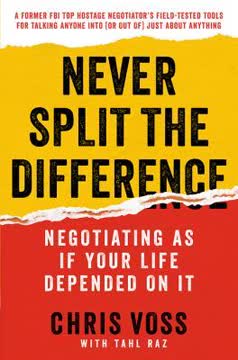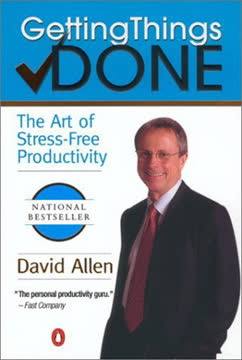重点摘要
1. 将失败重新定义为学习与成长
如果你不再将目标仅仅看作最终的成功,而是定义为学习,那么你就永远不会再以传统意义上“失败”。
语言塑造现实。 传统上将失败简单定义为“未成功”,这种说法让人无力,容易产生恐惧和逃避。语言深刻影响我们的思维和行为,使用积极的词汇能引导大脑寻找解决方案而非借口。将失败视为学习机会,根本改变了我们对挫折的看法。
学习才是真正的成功。 当目标被定义为学习时,每一次尝试,无论结果如何,都是成功。这种视角至关重要,因为成功是通过反复试错积累而成,失败中汲取的教训最终塑造了赢家。只停留在舒适区,反而阻碍了成长。
“失败”中的学习案例:
- 害羞的人主动接近别人被拒绝,学会克服恐惧,习惯面对拒绝。
- 攀岩者在难度路线跌落,发现自身弱点,提升心理素质。
- 武术家输给更强对手,发现技术不足。
专注于挑战中的学习体验,而非成功与失败的二元对立,能让我们坚持并成长。
2. 用斯多葛哲学接受无法掌控的事物
有些事情在我们掌控之中,有些则不在。
关注可控之事。 斯多葛学派教导我们,内心的平静源于区分可控(思想、信念、态度、行动)与不可控(其他一切)。对无法控制的事件感到愤怒无益且自我折磨。接受无法改变的事,释放心理能量。
练习逆境。 为了增强对不可避免负面事件的抗压能力,斯多葛哲学建议有意识地引入不适感或想象最坏情况。这不是悲观,而是情感和实际的准备。通过自愿经历不适(如冷水澡、露营),我们更能应对被动的苦难。
一切皆为暂时。 理解生命的无常——人际、财物、健康、成功与痛苦——帮助我们接受失去,珍惜拥有。这种观念减轻意外挫折的冲击,促使我们努力维护美好,因为它们并非永恒。
3. 以现实和耐心管理期望
大多数人高估了一年内能完成的事,却低估了十年内能达成的成就。
虚假希望综合症。 反复失败往往源于对变化速度、难度和幅度的非现实期待。人们陷入用错误假设尝试、失败、再尝试的循环。对目标实现过程的无知是主要原因。
做好充分调研。 尤其是初学者,在设定雄心勃勃的目标前,应了解典型时间线和挑战。专注于经验证的可持续策略,避免速成。若同一策略多次失败,需勇于彻底调整,灵活应对至关重要。
接受延迟。 事情很少完全按计划进行。截止日期是参考,不应成为放弃的理由。进展慢不代表失败,耐心是长期成功的关键。
4. 通过高度专注与减少牺牲实现目标
我所知的创业成功唯一途径,是全神贯注,深陷困境,拼命挣扎。
缺乏专注阻碍进步。 同时追求过多目标必然分散精力,难以在任何一方面快速突破。现代生活节奏快,优先排序尤为重要。
牺牲不可避免。 实现重大目标需舍弃次要目标。明确最重要的生活改善(如职业转型、健康改变、创业),将大部分精力投入其中。专注带来克服障碍的力量。
拥抱无聊,精简行动。 坚持有效策略,即使乏味也要持续。效果胜过新奇。感到不堪重负时,找出那个能让其他任务变得简单或无关紧要的关键任务,优先完成。可尝试极端专注期,加速关键目标进展。
5. 通过直面不适克服恐惧驱动的失败
一个人的成功往往取决于他愿意面对多少不舒服的对话。
恐惧使行动瘫痪。 恐惧是失败的主要原因,阻止人们开始或导致半途而废。常见恐惧包括:
- 害怕未知(固守不快乐的舒适区)
- 害怕被拒绝(不敢尝试、不敢提问)
- 害怕失去自我认同(执着于负面自我形象)
- 害怕失去联系(害怕超越他人或遭嫉妒)
暴露疗法增强韧性。 克服恐惧最有效的方法是持续、有意识地面对不适。无论是面对拒绝还是探索未知,这种脱敏过程教会你在恐惧中行动。目标不是消除恐惧,而是穿越恐惧。
建立支持系统。 面对恐惧虽是个人挑战,但有支持关系助力。围绕鼓励你成长的人,即使需要寻找新圈子(如线上社区、导师),也不要因害怕失去联系而止步。
6. 通过信念与焦虑管理停止自我破坏
我决定,信念是不可抗拒的力量。
自尊低导致自我破坏。 缺乏自信会形成自我实现的预言,表现为不够努力、怀疑自己、轻易放弃或找借口(自我设限)。这些行为保护自我,却破坏成功。
坚信目标。 若难以相信自己,转而坚定相信目标的重要性和意义。对目标的深刻信念能激发动力和信心,自信会随努力自然增长。
建设性管理焦虑。 用以下方法替代自我设限:
- 防御性悲观: 设低期望,细致规划潜在障碍。
- 战略性乐观: 设高期望,想象成功,培养内控感(承担责任)。
将负面事件视为教训是战略乐观的关键。勇敢追求“看似不合理”的目标,抵抗社会对平庸的压力。
7. 通过拥抱不适与不确定建立韧性
生活若选择艰难之路便轻松,若选易路则艰难。
自愿不适塑造力量。 有意识地选择“艰难生活”,经常面对不适,能锻炼心理韧性。这种自我施加的压力不同于被动苦难,能让你更强大、更冷静地应对突发困难。
不确定是成长之路。 生活质量与能舒适容忍的不确定性成正比。不断扩展舒适区,未知的事物就不再令你恐惧,更愿意尝试新事物和学习。
让不适成为习惯。 设定规律性挑战自己(如每周一次),做让你害怕或不舒服的事。无需极端,可能是公开演讲或主动搭话。关键是持续暴露,保持警觉,防止自满,将恐惧转化为成长信号。
8. 放下自我与自我批评
若想获得更稳定、真实的自我价值感和个人力量,终将需要摒弃外在因素,如比较和成就。
自我阻碍学习。 为保护自尊而避免在学习新事物时显得愚蠢,阻碍进步。过于在意形象而非提升,适得其反。真正成长源于愿意出丑,尽管尴尬仍坚持尝试。
别太当回事。 越是把自己看得严肃,生活越难。尴尬的失败不可避免,学会以幽默面对,能快速释怀,避免无谓痛苦。用笑声化解挫折,助你更快前行。
重视学习胜过形象。 自我价值应来自内在体系,关注学习过程和努力,而非外在成就或与他人比较。内在焦点提供稳定自信,不易被失败或批评动摇。
9. 承担完全的个人责任
强者相信因果关系。
内控感至关重要。 成功者相信自己能掌控生活结果(内控),而非认为一切由运气或命运决定(外控)。这种心态是积极行动和韧性的基础。
避免习得性无助。 反复失败可能导致放弃尝试,因相信无能为力。承担失败(即使部分责任)和成功的个人责任,有助打破无助感,彰显你的能动性。
承认你的选择。 即使处境艰难,你几乎总有选择权,尤其是情绪反应和后续行动。摒弃“我别无选择”之类说法。认识并做出选择,即使不完美,也强化掌控感,助你学习和适应。
10. 明确愿景,积极追求所想
人生*终极失败,是不去追求自己想要的东西。
缺乏愿景导致漂泊。 没有清晰的目标,难以识别机会、找到助力或利用有利条件。你可能任由“命运”或他人左右,最终遗憾未发挥潜力。
清晰吸引机遇。 明确想要什么,如同过滤器,让相关机会和资源从背景中凸显。作者自助出版经历即是例证,明确商业模式让他识别并抓住看似偶然的论坛信息。
打造个人愿景。 设计理想生活的详细蓝图,包括理想的日常、核心价值观、人际关系、健康及各领域目标(学习、贡献、物质等)。书写愿景如同指路明灯,帮助决策与目标保持一致,激励行动。
11. 建设性处理失败,学会反弹
成功不在于结果,而在于过程中的学习。
失败触发过程。 遭遇重大失败痛苦,经历类似哀悼的阶段(否认、愤怒、讨价还价、抑郁、接受)。允许自己感受情绪,避免压抑,因为否认只会延长恢复时间。
改变情绪状态。 虽不能瞬间“走出来”,但可通过沉浸式活动获得心理距离。运动、亲近自然、与支持的朋友交谈,有助降低情绪强度,理清思路。
提炼教训。 冷静后分析失败,找出关键教训。探究根本原因,而非表面问题。明确最可能的失败原因带来希望和清晰方向,避免重蹈覆辙,提高下一次成功率。
12. 识别何时战略性放弃
不符合你的目标时,果断放弃。
非所有目标都值得坚持。 有时坚持是浪费时间和资源。应放弃那些:
- 不是你真正想要,只因社会压力或习惯而追求的。
- 代价过大,导致日常痛苦、健康、人际或自我价值受损。拖延可能是目标不合适的信号。
评估可行性与匹配度。 若你无法达到期望表现,或天赋兴趣与目标要求根本不符,应考虑放弃。努力重要,但适配更关键。
避免沉没成本谬误。 不要因已投入大量时间、金钱或精力而盲目坚持失败的事业。那是“杀鸡取卵”。应基于未来潜力和匹配度评估目标。若你一直在勉强维持,说明努力不可持续,应果断放弃。
最后更新日期:
FAQ
1. What’s "From Failure to Success" by Martin Meadows about?
- Comprehensive guide to resilience: The book explores how to build mental resilience and turn failures into stepping stones for success, using practical habits, exercises, and real-world examples.
- Types and causes of failure: Meadows categorizes different types of failure and provides tailored strategies for handling each, from unavoidable setbacks to self-sabotage.
- Mindset and recovery: The book emphasizes developing a success-friendly mindset, coping with setbacks, and bouncing back stronger.
- Actionable framework: Readers are given exercises, metaphors, and step-by-step processes to redefine failure and use it as a tool for personal growth.
2. Why should I read "From Failure to Success" by Martin Meadows?
- Universal relevance: Failure is a common experience, and Meadows offers relatable stories and advice for anyone facing setbacks in business, health, relationships, or personal goals.
- Practical tools: The book is filled with actionable exercises and mindset shifts that can be immediately applied to real-life situations.
- Science-backed insights: Meadows references psychological research and expert opinions, grounding his advice in proven methods.
- Empowering perspective: The book helps readers reframe failure as a necessary and valuable part of growth, reducing fear and discouragement.
3. What are the key takeaways from "From Failure to Success" by Martin Meadows?
- Redefine failure: Failure should be seen as a learning opportunity, not just a lack of success.
- Types of failure: Understanding the seven types of failure (e.g., unavoidable, unrealistic expectations, lack of focus) helps tailor your response.
- Mindset matters: Developing resilience, self-compassion, and personal responsibility are crucial for bouncing back.
- Strategic quitting: Sometimes, giving up is the right choice if a goal isn’t congruent with your values or is driven by sunk costs.
4. How does Martin Meadows define failure in "From Failure to Success"?
- Beyond lack of success: Meadows challenges the traditional definition of failure as simply not achieving a goal.
- Failure as lack of learning: He proposes that true failure is failing to learn from an event or setback.
- Language shapes perception: The words and metaphors you use to describe failure influence your behavior and resilience.
- Empowering metaphors: Meadows suggests thinking of failure as navigating a maze, sculpting a statue, or passing through a filter that builds character.
5. What are the seven types of failure discussed in "From Failure to Success" by Martin Meadows?
- Unpreventable failure: Setbacks you couldn’t control, such as layoffs or unexpected breakups.
- Unrealistic expectations: Failing due to setting goals that are too ambitious or based on false hope.
- Lack of focus: Spreading yourself too thin across multiple goals, leading to underperformance.
- Fear-driven failure: Letting fear of the unknown, rejection, or loss of identity prevent action.
- Self-sabotage: Undermining your own efforts due to low self-esteem or lack of belief in your goals.
- Impatience: Giving up or burning out because progress is too slow or the process is unsustainable.
- Self-licensing: Rewarding yourself for good behavior with actions that undermine your progress.
6. What practical exercises and habits does "From Failure to Success" by Martin Meadows recommend for building resilience?
- Learning from failure: After setbacks, list lessons learned instead of dwelling on negativity.
- Practicing misfortune: Use Stoic exercises like visualizing worst-case scenarios to build emotional resilience.
- Extreme focus: Dedicate short periods to working exclusively on one key goal to experience the power of focus.
- Self-compassion: Write a letter to yourself as if you were your best friend to foster forgiveness and self-kindness.
7. How does "From Failure to Success" by Martin Meadows suggest you should cope with and bounce back from failure?
- Five-step process: Process the failure, forgive yourself, change your emotional state, learn from the experience, and restart your efforts.
- Emotional acceptance: Allow yourself to feel and process negative emotions before moving forward.
- State change: Use immersive activities or supportive social interactions to shift from negative to positive emotions.
- Restart strategies: Choose between jumping back in with a big push or easing in gradually, depending on your situation.
8. What are the five rules for developing a success-friendly mindset in "From Failure to Success" by Martin Meadows?
- Embrace discomfort: Regularly challenge yourself and step outside your comfort zone.
- Let go of ego: Don’t let fear of embarrassment or failure stop you from trying and learning.
- Feel worthy of success: Recognize your strengths and motivations, and believe you deserve to achieve your goals.
- Take personal responsibility: Shift your locus of control internally and own your successes and failures.
- Clarify your vision: Identify what you truly want and pursue it proactively.
9. What are the three master strategies for building strength to keep going, according to "From Failure to Success" by Martin Meadows?
- Develop a passion: Engage in activities that challenge you and build mental toughness, drawing lessons for other areas of life.
- Adopt the experimental approach: Treat new endeavors as experiments, focusing on learning rather than guaranteed success.
- Find value regardless of results: Even if you don’t achieve your desired outcome, identify the skills, knowledge, or growth gained from the attempt.
10. When does "From Failure to Success" by Martin Meadows advise you to give up on a goal?
- Lack of congruence: If a goal isn’t aligned with your values, interests, or well-being, it’s wise to let it go.
- Unrealistic achievement: If you can’t reach the level of performance you desire after a reasonable effort, consider moving on.
- Sunk cost fallacy: Don’t persist just because you’ve already invested time or resources; cut your losses if the goal no longer makes sense.
- Constant catch-up: If you’re always behind and can’t prioritize the goal, it may not be important enough to continue.
11. What are some of the best quotes from "From Failure to Success" by Martin Meadows and what do they mean?
- “Life’s easy when you live it the hard way... and hard if you try to live it the easy way.” – Emphasizes the value of embracing challenges for long-term ease and growth.
- “You fail when you fail to learn something from an event.” – Redefines failure as a missed learning opportunity, not just a missed goal.
- “Show the middle finger to your ego.” – Encourages readers to let go of embarrassment and focus on learning.
- “Persistence is useless if it leads to waste.” – Reminds readers that sometimes quitting is the smartest choice.
12. How does "From Failure to Success" by Martin Meadows use real-world stories and scientific research to support its advice?
- Empowering stories: The book features stories of people like Turia Pitt, Sidney Poitier, and Toni Morrison, illustrating resilience and growth after failure.
- Scientific grounding: Meadows references psychological studies on self-compassion, locus of control, and the false hope syndrome to validate his methods.
- Personal anecdotes: The author shares his own failures in business, fitness, and relationships, making the advice relatable and authentic.
- Expert insights: Quotes and concepts from figures like Tony Robbins, Arnold Schwarzenegger, and J.K. Rowling are used to reinforce key points.
评论
《从失败到成功》获得了大多数读者的积极评价,大家称赞其切实可行的建议、真实的案例以及实用的练习。许多人认为本书适用于各种生活情境,且对失败提供了全新的视角。评论者特别强调本书能够改变人们的认知,并提供促进个人成长的工具。其中,有些读者尤为看重关于何时放弃目标的章节。然而,也有少数批评声音指出内容缺乏令人印象深刻的亮点或创新观点。总体来看,读者普遍推荐本书,认为它适合那些希望克服失败、迈向成功的人士阅读。
Similar Books

















